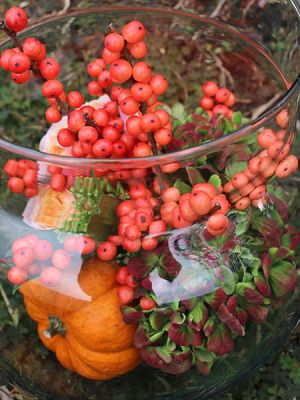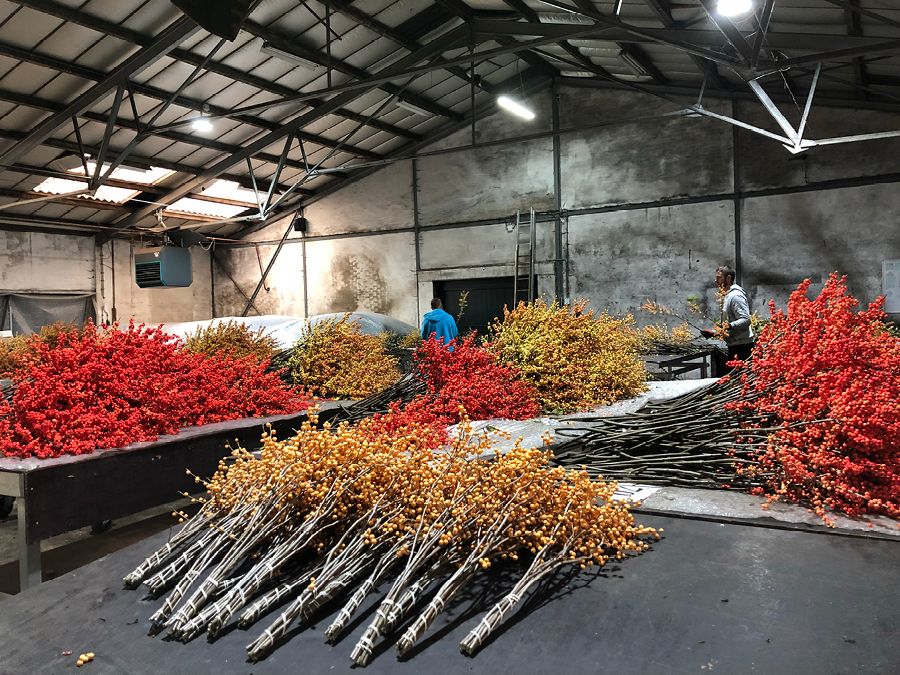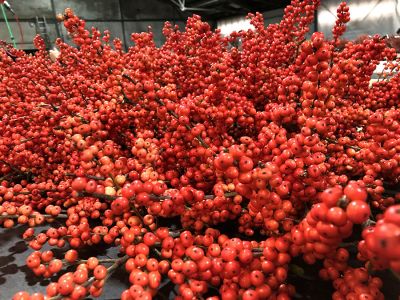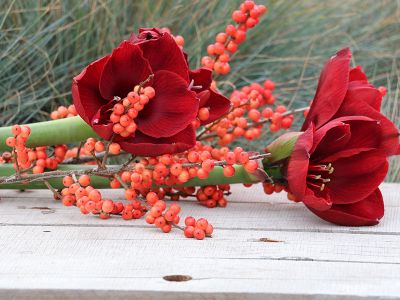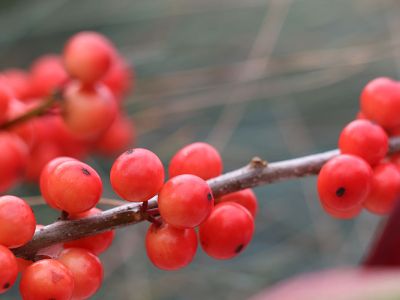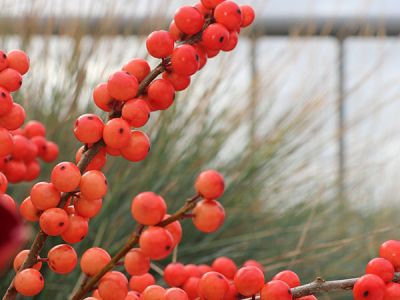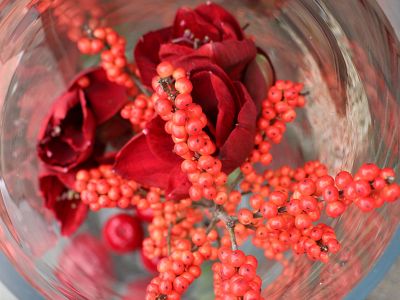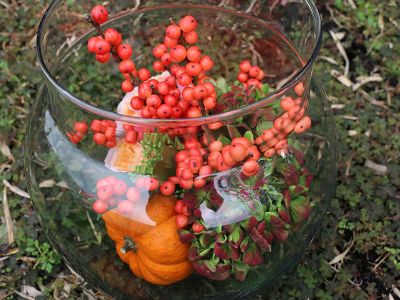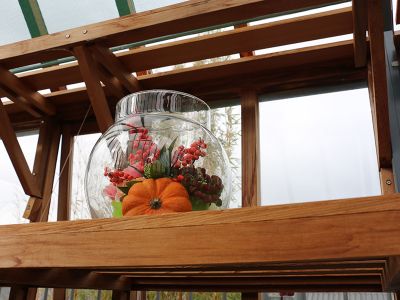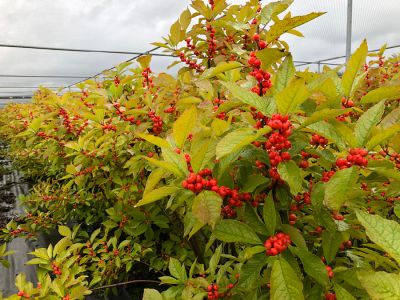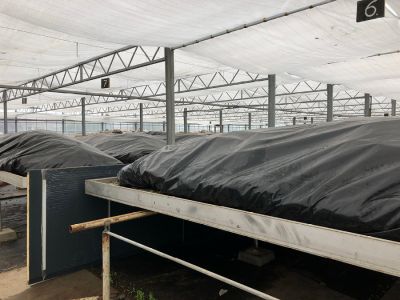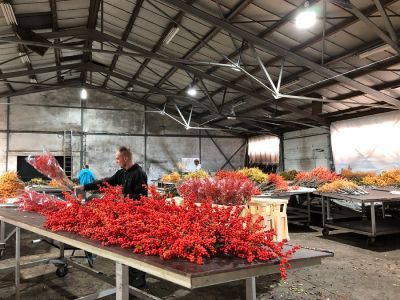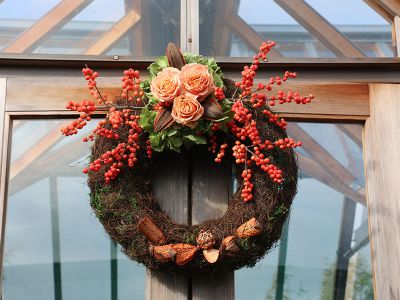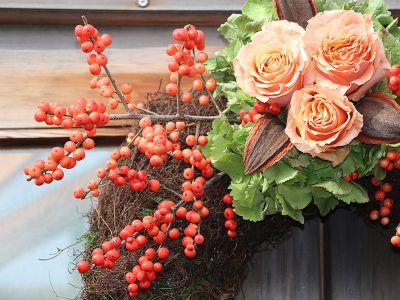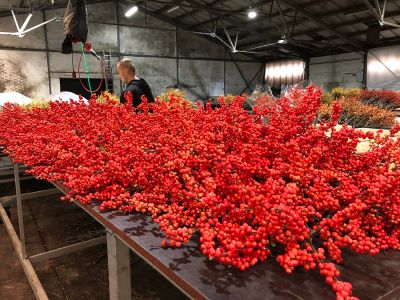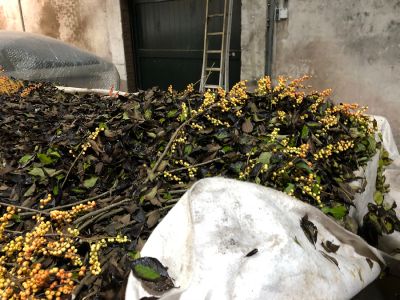Ilex Verticillata Oudijk's Orange
In the spotlight
As soon as you step into the barn of nursery Emiel de Jong, you will immediately be overwhelmed by the brightly colored berries against the gray back wall of the barn. What a wonderfully crazy impression this leaves behind, and such a colorful sight to see all the different types of Ilex Verticillata in Emiel's barn. These different varieties just came from under the canvas, were defoliated, bunched and provided with a cover. The Ilex Verticillata is a biennial and deciduous product and is also called Winterberry. Emiel de Jong is known for his versatile range of Ilex with many different colors.
Chinese New Year
Ilex is a very popular product, especially in China, because it is widely used for the Chinese New Year that takes place at the end of January / beginning of February. Red plays an important role in this country. Ilex is a crop that is available until the end of December. For many growers, it is therefore a challenge to store the Ilex for six to eight weeks. This requires a special storage method, which a number of growers have now mastered. Emiel does not sell Ilex for the Chinese New Year. The challenge of looking for the right way to preserve the branches for so many weeks provides a risk he is not willing to take.
Ilex Verticillata
Emiel is the third generation in the company. His grandfather started as a tree grower and his father eventually took over the business. In 1975 his father bought a piece of land on which a small corner of Ilex Verticillata grew, where his passion for the product originated. For many years his father bred and propagated the Ilex making the company as big as it is now. His father has long remained active in breeding different types of Ilex. Since 2007 Emiel has completely taken over the company.
The company has 10 hectares full of Ilex. Because Ilex is a crop that gives flowers and thus berries only once every two years, it takes extra time to introduce a new variety. It will take at least 15 years before a selected variety goes into production. During the test process, it is checked whether the flowers give enough branches that can be cut and whether the branch is full enough with berries.
In the spotlight
In this week’s spotlight, the Ilex Verticillata 'Oudijk's Orange', an orange colored Ilex. It is a special variety that gets a bit lighter every week. The first cuts are therefore darker in color. This has to do with the dark days outside and the berry that gets slightly larger as weeks pass. The Ilex has a long vase life. If you put Ilex on water, a branch can easily last for three weeks.

The cultivation
Emiel has several gardens with Ilex. During our visit we drove to the different gardens to take pictures and film, so we got a total picture of the production process.
Berries after two years
The Ilex, as mentioned earlier, is a product that blooms every two years. The year after the berries have been cut, new offshoots are forming. The second year lateral branches are formed that will bloom in June. The white flowers of the female plants need to be fertilized; only these carry the berry. Before flowering, it is necessary that there are male plants in the neighborhood that can fertilize the female plants. In the flowering season, a beekeeper brings in 15 bee colonies to move through the garden. In addition to the male plant, these are necessary for good pollination. The garden is protected from birds by nets over the crop. For humans the berry is absolutely not tasty, but for the birds they are a real delicacy.
Sprouting the branches
When the berries are ripe at the end of September, the branches are cut and placed in a greenhouse. At that moment the leaves are still on the branches. The branches are laid on tables on which black plastic and bubble wrap is stretched so that they can be covered. After ten days the leaves fall off, and the product can be collected into bunches.
If the branches are defoliated, they are placed on large tables, where the branches are manually selected in 9 grades based on quality and size. The Ilex branches are bundled per 10 branches for all lengths up to 60 cm. From 70 cm onwards, bunches are made of 5 branches each.
FloraPodium, 31 October 2018






